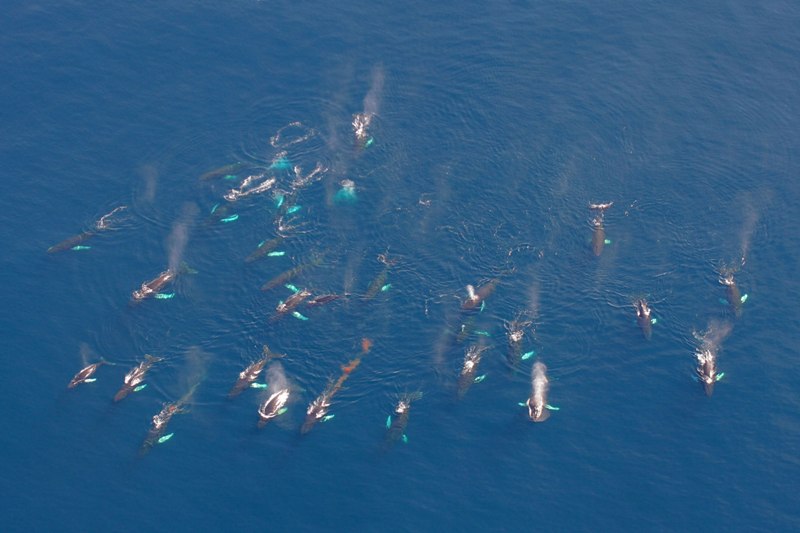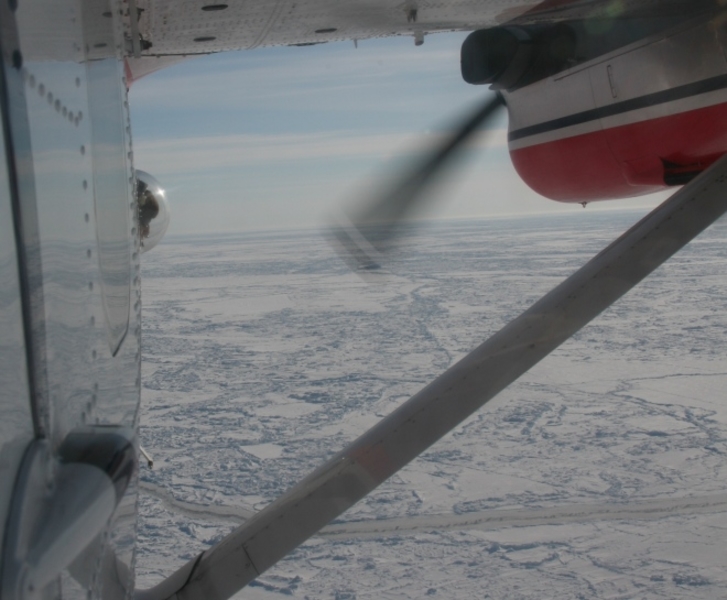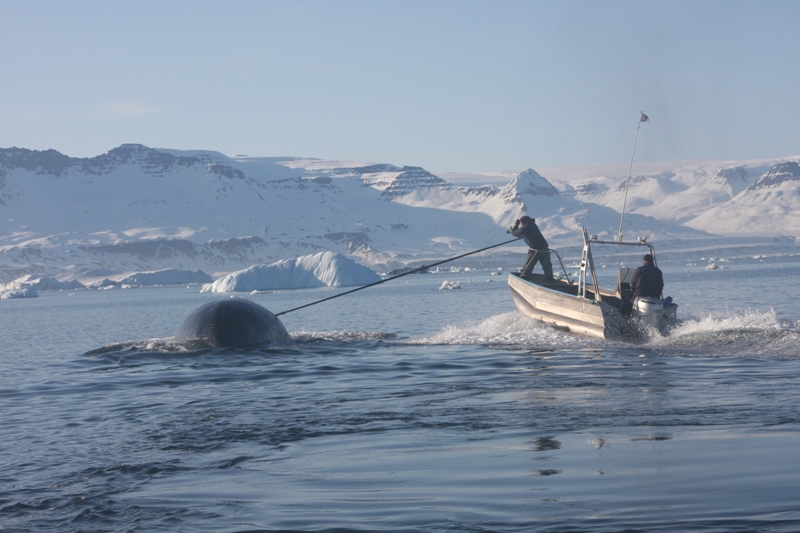Aerial surveys of marine mammals Published 23.12.2010

Taking a census of whales and walruses
There are few places left on Earth where people live as hunters of wild animals and especially as hunters of the great sea mammals. In many industrialized societies this way of gaining a living is regarded with incomprehension, concern or even disgust. Greenland is one of those places where hunting of seals and whales is of great importance. However, Greenlandic hunting activities have long been criticized intensely, and many influential international organisations would like to see this way of life come to an end. For instance, it has been emphasized on countless occasions that Greenland is unable to prove that their hunting activities are sustainable and population size estimates have especially been requested.
A huge undertaking
In order to effectively dampen this criticism, Greenland has performed extensive population counts of all the important whale species and walruses in both East and West Greenland since 2005. It has been a huge undertaking, which Greenland would not have been able to carry out without large special appropriations from the former Home Rule and the Danish Environmental Agency via the Arctic program for environmental support Dancea.
Documented sustainable hunting
Before 2005, we only knew the numbers of very few whale species, and these were typically more than 10-15 years old and not at all sufficient to defend present-day hunting activities. We now have well-documented numbers of 9 whale species and, in addition, three Greenlandic narwhal populations and three walrus populations. Most of these numbers have been approved by the international scientific committees concerned with advising on these species. Surveys have been performed by plane, which is expensive, but definitely the best approach, as the areas to be covered are very large.
Increase in several species
The counts show a population increase in humpback whale, fin whale, Greenland whale, and beluga in West Greenland and narwhal in the Qaanaaq area. We are still unable to determine whether changes have taken place in the populations of minke whale, white-beaked dolphin, killer whale and narwhal in Melville Bay and in East Greenland. This is especially due to these species being difficult to count. For instance, it has been virtually impossible to find minke whale during aerial surveys, probably because they most often swim alone and can be seen only in extremely calm and clear weather, i.e., very seldom.
Greenland’s problem children
Narwhal, beluga and Greenland whale have long been a cause of concern for Greenland because the hunting pressure on narwhal and beluga was too high and because the Greenland whale population has shown no signs of increasing in spite of being preserved for 100 years. Around 1999-2000, however, several Greenland whales were suddenly observed in Disko Bay. In 2006, meticulous counting revealed that there were now around 1200 whales in the area in spring. This survey was particularly advanced as we were able, for the first time, to satellite trace a number of whales, thus demonstrating that our aerial surveys actually covered the distribution of whales, and, at the same time, diving data were collected from the exact same area and time point.
Beluga
Belugas were counted in their winter habitat i West Greenland and in spring in Nordvandet (the “North Water”). The long series of beluga counts goes back to 1981 and has shown that the beluga population is recovering after a period of intense hunting in the late1980s and early 1990s. Our surveys also show that beluga move with the ice, which has been retreating further west during recent years, and this makes it more difficult for the hunters to catch them.
Narwhal
Aerial surveys of narwhal were carried out in all areas with permanent populations and regular hunting. With the exception of Uummannap Kangerlua, however, where narwhals stay during November, when it is too dark to conduct aerial surveys. The coverage of narwhal has been particularly impressive because Greenland and Canada together have a special responsibility for managing the narwhal populations, being the only two countries with large narwhal populations.
Scientific screening of numbers
Narwhal, beluga, Greenland whale and walrus are good examples of the reason why Greenland cannot simply decide how many animals there are. Most populations only stay in Greenlandic waters for part of their life cycle and otherwise stay in foreign waters. Thus, the quality of the surveys must always be approved by international scientific organisations before the numbers can be used for establishing quota. As far as the large whales are concerned, this is carried out in the International Whaling Commission (IWC) where a very critical scientific committee monitors closely whether the numbers are sound and calculations correct. The committee ensures that population numbers are neither exaggerated nor underestimated. Similar screening takes place in the North Atlantic Marine Mammal Commission (NAMMCO) with respect to walrus and small whales (cetaceans). It may take several years to finally approve a number and in some cases the criticism is impossible to refute.
Importance for Greenland financially …
Greenland needs these numbers to document that exploitation is sustainable because, among other things, trade with objects of art made of these materials is regulated by an organisation, CITES, who require that the animals be caught on a documented sustainable basis. Without a CITES permit tourists may not import pieces of jewellery made from e.g. walrus to their home country. Beluga and narwhal counts have given Greenland a positive CITES assessment, which means that it may soon be possible again to trade objects of art made from e.g. narwhal tusk.
… and scientifically
At the same time, we may benefit from well-documented numbers and time series of whale populations far into the future because results from the surveys may be used to shed light on long-term changes in the entire ecosystem. Whale and walrus are top predators (the final link in the food chain) and thus sum up changes in the food chain as well as the physical environment (e.g. ice and temperature conditions).

Mads Peter Heide-Jørgensen during an aerial survey in 2006 Photo: F. Ugarte

Bubble windows provide a good panoramic view. Photo: Mads Peter Heide-Jørgensen

Hunters from Qeqertarsuaq tagging a Greenland whale with a satellite transmitter on behalf of the Greenland Institute of Natural Resources in 2009 Photo: Kristin Laidre

